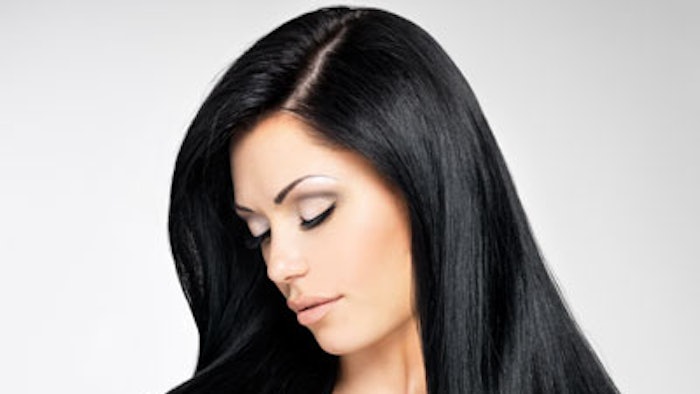
Much has been said about polymers and their promising abilities and applications in beauty, cosmetic and hair products, but do these ingredients really deliver and how? The answer is resoundingly yes.
There has been an interest in these organic materials since product developers learned polymers can serve as a barrier to moisture and heat. And the same protection polymers provide by serving as a package for goods to prevent drying out is the same protection to hair.
Polymers are a long link of carbon chains that expand and stretch on contact with heat and application to the area of interest. And a good product, with the right combination of ingredients, will embody the appearance and characteristics of the claims stated on the bottle. Take, for example, a ceramide III polymer monolith and polyacrylamide. These two polymer ingredients added with the right combination of additives (protein, leaf abstracts, etc.) will look and feel as the product promises.
Know the Difference
Cosmetic properties go beyond what can be seen under a microscope. These polymer products can be used together, but typically formulators use one or the other. Polyacrylamides are porous and spongy (giving volume and hair repair properties) and literally will form a link between your hands if, when you are holding polyacrylamides, you rub together and then separate them. Hence, the binding feature of the product. Polyacrylamides' characteristics are much like the links in their chemical structure. If you add water or oil, a polyacrylamide will absorb and maintain its consistency while being viscous. (Although thick or sticky, you can spread the product well over hair.)
Ceramides are often used in hair serums, although that is not their only application. And the differences between ceramides and polyacrylamides have to deal with their substrates. Ceramides have more O-H substrates (alcohol substrates), and in many cases, the hydrolyzed polyacrylamide absorbs water better than the ceramide. These products also usually have different physical appearances.
What these properties mean for hair is that the polymer will act as a type of binding property to give strands flexible spring and bounce, as well as acting as a moisture agent to help maintain hydration. Good elasticity allows the skin and hair to be pulled without breaking. That’s the benefit of polymers: their microfibrous materials act almost like a graft to coat the hair, allowing it to penetrate strands of hair and prevent cracking or repair splitting.
All Polymers Are Not The Same
Not all polymers are the same, and that can have an affect on how different products are thus marketed. As a comparison, are all tires the same? No, right? Some have better tread and expansion than others. Some tires don’t hold well under heat, humidity or cold weather—but some do. It’s the same principle with polymer hair products.
A good polymer will maintain performance and thermal stability over time in repeated uses and applications to hair or skin. New follicles or cells have the benefit of being well conditioned and supported from elements such as air, extreme humidity and chemical processing while damaged areas are reinforced. Some polymers offer one or several hair benefits—it depends on your hair needs, which is why all polymers are not all the same.
Taneisa Grier is an analyst who's a chemist by training, an educator by choice and a photographer by happenstance. When she isn't reading or writing and crunching numbers, she’s working on an upstart cosmetic company.










